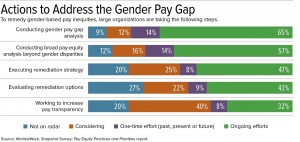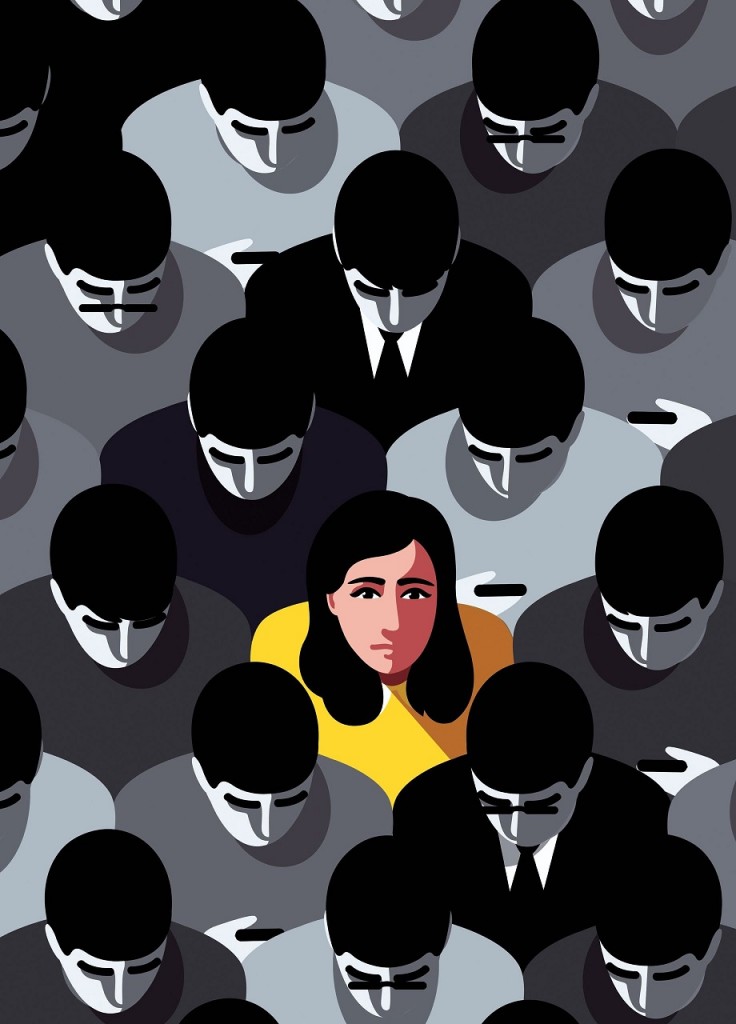Gender Pay Discrimination
Iqra Junejo
Equal pay systems are vital for women empowerment and professional growth but these rarely exist. International Labor Organization (ILO) in its “Global Wage Report 2018-19” states: “[O]n average women currently continue to be paid approximately 20 per cent less than men.” The gender pay gap is high in the developing world. In Pakistan alone, the gap is 34% which is more than the double the worldwide average. These shocking statistics on pay inequalities evidence that women are victims of persistent gender biased pay systems. Though women make 50 percent of the workforce, they are not paid the remuneration that equal to that of their male counterparts for similar work.
The ILO in its International Equal Remuneration Convention, 1951, proposed that both males and females are entitled to equal remuneration for the work of equal value, without any discrimination based on gender. But the world is still far from achieving this target. “The reality is that, if we do nothing, it will take 75 years, or for me to be nearly 100 years, before women can expect to be paid the same amount as the men for the same work, says Emma Watson, UN Women Goodwill Ambassador. This shows that the pace of progress towards the end of pay inequality is extremely slow which means that achieving pay equilibrium is still a distant dream.
Pay discrimination starts from home where women spend a big part of their lifetime doing household chores and taking care of their families without being paid for their selfless services. Their services are considered as their primary duty. In many societies, they are not even offered a small help by members of family. According to The Guardian, in Britain on average women did almost 60 percent of the unpaid work than men.
Secondly, women are denied their right to education, particularly in rural areas of the world. Education is equally important for both males and females. According to UNICEF, 29 percent of girls are missing out on their primary school education, compared to 27 percent of boys of the same age group globally. An educated mother or daughter can play a vital role in economic growth of her family and can give an improved lifestyle and quality education to her children by contributing financially to fulfil the needs of their family.
In many societies, girls are married off before they attain the legal age of marriage. Around 21 percent of girls in Pakistan are married before the age of 18, UNICEF stated in its 2013 report. Soon after getting married, these girls face the pressure of society for motherhood; while their brothers are allowed to get education, vocational training or whatever they want in their lives. Parents believe that getting their daughter married at a early age will help them reduce their daily life expenses, i.e. on food, etc. While her in-laws believe it is easy to get services such as cleaning, laundry, etc. from a young and least educated girl than a well-educated one. Many educated girls are not allowed to excel in their profession after getting married; they are forced to give their time to marriage and family.
In rural areas, when females are grown up, they are forced to go into agricultural fields where they do strenuous work, along with the daily housework, collecting water, tending livestock, and so on. According to one study conducted in 2012, female agricultural workers earned only Rs170/day while their male earned Rs300/day for the same work in Pakistan. If women were paid an equal amount, it would have resulted in increased family income.
Gender based wage system in today’s modern world shows how backward we are.
The gender pay gap doesn’t end here; it has permeated other professions too by the gender discriminated system. According to the Doximity 2017 survey, women doctors earned an average of 27.7% less than their male counterparts in the United States. Medical is considered among the noblest of professions. Both genders received similar training, spending equal amounts of time on training before starting practicing as medical professionals. Their income should be based on expertise and qualification they possess, and not on their gender.
Garment industry is another very important sector where women labourers are worst affected by pay inequality. According to ILO, the pay gap in the garment sector is 57.3% in Pakistan. We will find a gender pay gap in almost every profession globally, although almost all the countries of the world have promised to work on 17 ‘Sustainable Development Goals’. Gender equality has a direct impact on 9 of the 17 SDGs, sans progress on gender equality, achieving SDGs by 2030 will not be possible.
The author is a blogger. She tweets as @junejo_iqra.
Pakistan and Global Gender Gap Index 2020
In its 2020 Global Gender Gap Index (GGGI), the Switzerland-based World Economic Forum (WEF) ranked Pakistan at number 151 out of 153 countries. Although the country has managed to reduce the gender gap by 56 per cent, Pakistan ranks in the bottom 10 in three of the four main categories of the index and below the 100th mark in 12 of the 14 individual indicators composing the index, the report added. However, Pakistan improved on some indices and was marked stable in others. The gap remains cavernous in terms of economic participation and opportunities.
Encouragingly, however, Pakistan improved on a majority of indicators.
The report further stated that only one-quarter of women participate in the labour force i.e. working or looking to work compared with 85 per cent of men.
“Only 5 per cent of senior and leadership roles are held by women (146th), twice the rate of 2016. It is estimated that only 18 per cent of Pakistan’s labour income goes to women (148th), one of the lowest share among countries studied.”
While the majority of countries have bridged or nearly bridged the educational gender gap, Pakistan’s still stands at almost 20 per cent. “Less than half of women are literate, compared with 71 per cent of men, while the share of women enrolled is systematically lower than the share of men across primary, secondary and tertiary education,” read WEF’s report.
Pakistan further ranked 93rd on the political gender gap. As of January 2019, there are three women in the 25-member cabinet.
The Swiss equal pay tool for small firms
In Switzerland, the Federal Constitution and the Equality Act legally oblige employers to respect the principle of equal pay for work of equal value. Furthermore, according to the Public Procurement Act, public authorities must not contract with firms that do not respect wage equality, and may check compliance. Since 2006, the Swiss Federal Office for Gender Equality has offered a selftest tool called Logib (www.logib.ch) which uses a multiple regression model to assess the average impact of a gender factor on wages while also taking into account objective, non-discriminatory factors. However, for technical reasons, this tool works best for firms with at least 50 employees.
A new tool has been developed which, unlike Logib, is based on a job evaluation methodology drawing on work science. According to the latter, each function implies requirements and demands. Requirements are defined as the skills necessary to perform a task. Demands are aspects of carrying out a task that may be detrimental to the worker. There is broad consensus that functions with higher requirements and demands should receive higher salaries. The new tool enables requirements and demands to be assessed on the basis of six factors (required level of education, autonomy, expert knowledge, responsibility, psycho-social and physical requirements, and psycho-social and physical demands). In addition, it takes into account the individual worker’s experience.
An assessment using the new tool requires the employer to accomplish four simple steps:
(1) identification of existing jobs or functions;
(2) evaluation of each job;
(3) entering of employee data;
(4) attribution of jobs to employees.
Thereupon the tool automatically establishes an expected ranking of employees, which is then compared against the effective ranking based on actual salaries. Through pairwise comparison, the instrument identifies individuals occupying a lower actual wage rank than would be theoretically expected, compared to at least one person of the opposite sex. These individuals are flagged as potentially suffering wage discrimination.
By providing valuable information about compensation practices within just a few hours, this new tool enables employers to go into the matter more deeply and may eventually encourage them to make the necessary adjustments.
The latest version of the tool has been successfully tested with a few dozen small firms. Currently, further developments are under way to enhance customization and visualization and thereby increase its value added for small firms. The Federal Office for Gender Equality plans to make the tool freely available on the Internet, together with complete documentation, in the second half of 2019.
 Jahangir's World Times First Comprehensive Magazine for students/teachers of competitive exams and general readers as well.
Jahangir's World Times First Comprehensive Magazine for students/teachers of competitive exams and general readers as well.



